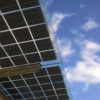Traditional solar cell test instruments use techniques that have not changed significantly over the last 40 years. We took advantage of the opportunity to develop a cell tester that is faster, gives better results, and is more cost-effective.
PV Magazine has awarded Sinton Instruments with the 2017 “Technology to Watch” award. This award comes after the release of the FCT-750 cell tester that brings research-level analytics to mass production. The FCT-750 uses innovative methods to evaluate the performance of high-efficiency cells and accurately extract important parameters, such as true series resistance, effective lifetime, and substrate doping. This is the best method to measure PERC, IBC, and HJT cells.
The FCT-750 utilizes Sinton’s patented voltage modulation technique to enable accurate characterization of cells, including the conventional measurements of power, voltage, short circuit current, fill factor, and efficiency. Unlike most cell-testers, the FCT-750 is also capable of allowing advanced optimization of cells and modules by providing measurements of substrate doping, wafer bulk lifetime, maximum power point lifetime and emitter saturation current through a full Suns-Voc analysis. Each of these advanced parameters add a unique element of process control to a production line. All of this is achieved in a total acquisition and analysis time of less than 200 ms, with a 5 ms flash duration.
“Traditional solar cell test instruments use techniques that have not changed significantly over the last 40 years,” said Ron Sinton. “We took advantage of the opportunity to develop a cell tester that is faster, gives better results, and is more cost-effective.”
The FCT-750 has been designed with its environmental impact in mind. The power consumption of the entire test system (flash power supply, computer, and electronic load) is around 300W. All of this is available at a low price point with a low cost of ownership. The real value of this instrument is the feedback of information allowing an acceleration of advances in the efficiency and cost trends of solar cells, enabling faster conversion to solar electricity worldwide.



